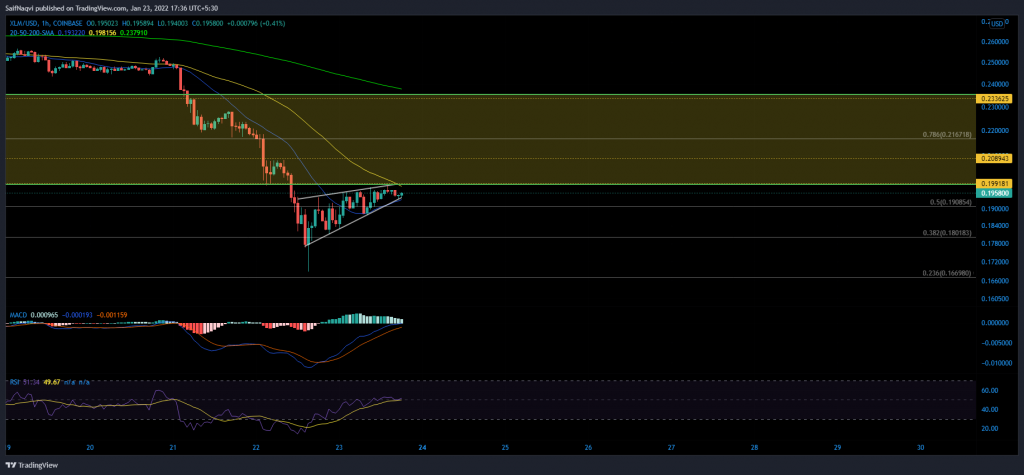Stellar Lumens was in a dire state of affairs. Between 13-22 January, the alt coughed up a 40% decline and touched a 1-year low at $0.1688. A brief rally did allow XLM to move in line with broader market gains but a rising wedge setup pointed to a downside on the hourly chart. Moving forward, XLM’s fortunes would depend on whether it can maintain above the hourly 20-SMA (blue) or not.
Stellar Lumens Hourly Time Frame


Stellar Lumens’ market has busted wide open for short trades after its price slipped below a demand zone between $0.1991-$0.2184. Even though bulls staged a comeback above the hourly 20-SMA (blue), XLM’s rising wedge was vulnerable to a breakdown.
Should XLM slip below its hourly 20-SMA (blue), further downside was possible at the 38.2% and 23.6% Fibonacci levels. The sell-off would become more severe if XLM fails to cut losses above $0.166980. The next area of defense lay between $0.144606-$0.122774, marking a full 25%-35% decline from XLM’s press time level.
To negate a bearish outlook, XLM had to overcome broader consensus by closing above its hourly 50-SMA (yellow). The breakout would open up XLM’s journey back to the hourly 200-SMA (green), with a minor hurdle set up at the 78.6% Fibonacci level.
Indicators
The hourly RSI was currently grappling with sell traffic around 50. Normally, a move above 55-60 reinforces notions of a strengthening uptrend. However, rejection at 50 is a bearish sign which indicates that buyers are losing momentum.
Similarly, the MACD’s histogram reduced in length over the past three sessions – a sign that upwards pressure was losing steam. A sell signal would be available if the MACD forms a bearish crossover before moving above its half-line.
Conclusion
Stellar Lumens’ brief period of returns could extinguish completely once the price slips below the hourly 20-SMA (blue). Hence, shorting would be preferred over any long setups, especially since XLM sat below a number of important support regions.





